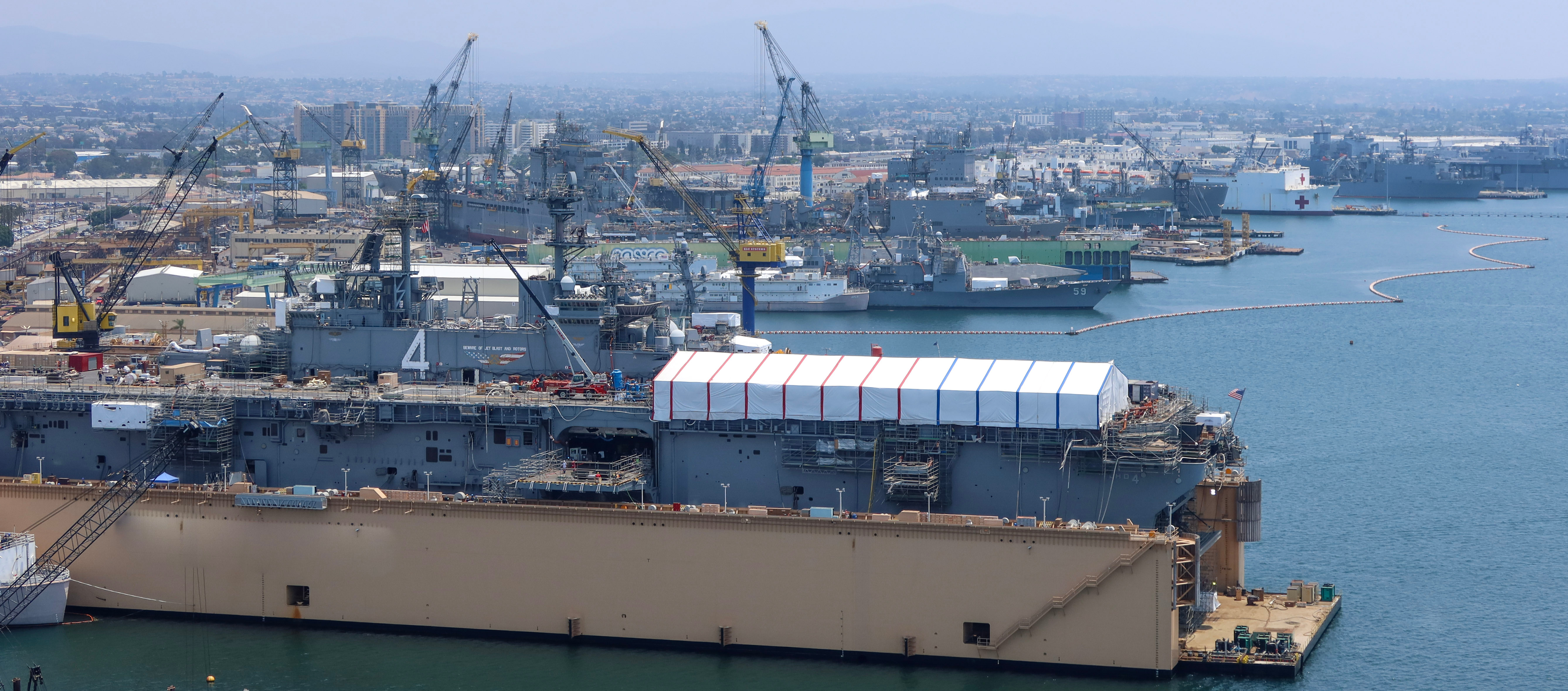Whether you’re a contractor hired to do work at a shipyard, a shipyard employee, or a crewmember on a ship, you should be aware of the unique dangers lurking in shipyard environments. Protecting workers’ health in these distinct settings requires expertise in all areas of industrial hygiene and safety and an acute awareness of both new and existing hazards that may arise as you service the shipyard.
EnSafe’s Bryon Craig is a Certified Industrial Hygienist and Certified Safety Professional with over 27 years of experience in Navy safety programs. As a former Navy Industrial Hygiene Officer and submarine nuclear power plant operator, he is EnSafe’s leading expert on shipyard safety.
From both his prior experience and his project experience at EnSafe, Bryon has determined that avoiding shipyard hazards and ensuring employee safety in these environments requires three factors:
- Close communication and collaboration
- Intricate knowledge and understanding of applicable regulations
- Vigilance in assessing hazards and establishing work controls
“Anticipating hazards requires direct participation from company line management and production staff, and close collaboration with the shipyard safety department, which may include a naval safety officer if the work is set to take place on a ship,” Bryon said. “Both government and private shipyards have full-time safety professionals that maintain robust safety programs and will likely have hazard assessments and procedures that may be applicable to your work.”
Shipyards are hotbeds for a variety of hazards, the most common being hazardous metals (hot work), airborne particulates (fiberglass and grinding), organic vapors (stripping and painting), noise, confined spaces (tanks and voids), falls (slips, trips, and working from heights), ionizing radiation (non-destructive testing and naval nuclear power), and non-ionizing radiation (heat sealers and electronic equipment).
Communication with shipyard personnel and safety staff offers insight into what has been successful in the past when similar work has taken place at the shipyard. Staff may also be able to provide previous exposure data that may be helpful when developing work controls and hazard-specific instructions for safety training, hazard communication, accident and near-miss reporting, and evacuation procedures.
“The shipyard and ship safety staff face daily challenges of protecting their workers and will likely be forthcoming and helpful in these efforts because their goal is the same as the contractors,” Bryon notes.
There will also be several sets of applicable regulations that dictate work in a shipyard, such as both 29 CFR 1910 (General Industry Standard) and 29 CFR 1915 (Maritime Standard). Likewise, the shipyard will have its own specific safety policies, and if the work occurs on a naval vessel, there will be Navy-specific standards to learn as well.
But when it comes to safety, there is no better approach to avoiding hazards in the shipyard than vigilance, and this is where the greatest effort is required.
“Even simple activities like daily production meetings are a helpful way to assess workplace readiness and safety,” Bryon explains. “That’s when staff can determine whether they have the most appropriate work controls in place, the correct PPE, or if new work has popped up that workers may be unprepared to complete.”
Another best practice for shipyard and ship personnel is a joint walkthrough of the workspaces. These can be especially helpful in determining whether the work will expose others at the site to hazards, or whether other simultaneous work at the site can potentially expose your own workers to a different set of hazards.
“Additionally, walkthroughs also offer the benefit of checking that your workers are complying with the necessary safety protocols,” Bryon adds. “But perhaps most importantly, they can also help determine if your established work controls are effective. You can assess things like whether industrial ventilation was installed as planned, were the workers issued the correct PPE, and confirm that their supervisors provided a pre-work safety brief.”
Of course, the OSHA-required hazard assessments are also vital in ensuring workplace safety. Monitoring to determine if the work will expose workers to hazards potentially exceeding the regulatory Action Level (which triggers training, periodic exposure monitoring, and medical surveillance) is imperative and legally required to protect workers at hazardous sites like shipyards.
Bryon adds that work controls such as confined space program procedures may also be difficult to manage in a shipyard environment. Familiarization and compliance with gas-free engineering and marine chemist procedures will help prevent worker injury and fatalities in confined spaces where several groups of workers may be entering and working simultaneously.
A safe and successful shipyard experience can certainly be achieved when communication, regulatory knowledge, and hazard awareness at the site are prioritized. Shipyard projects can be daunting, particularly when it comes to navigating the requirements and regulations pertinent to shipyards, but fortunately, EnSafe’s staff has extensive shipyard experience and are available to help you improve your safety and health programs, identify hazards, and properly perform tasks like exposure monitoring.
Contact us today!
